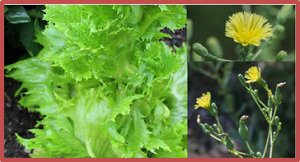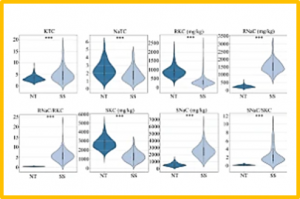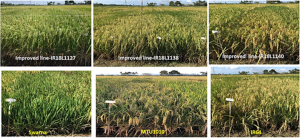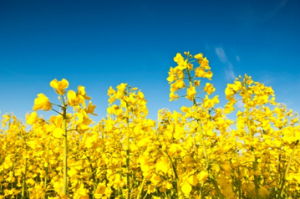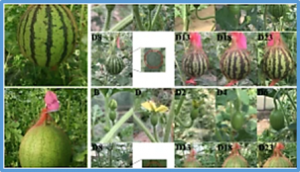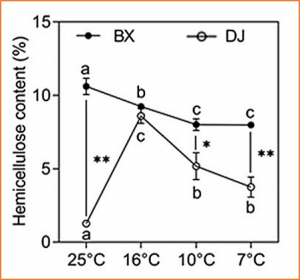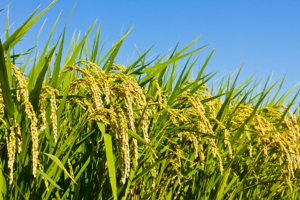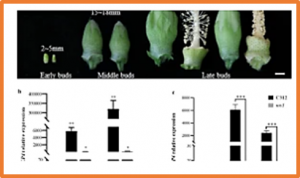Bolting, defined as stem elongation, marks the plant life cycle transition from vegetative to reproductive stage. Lettuce is grown for its leaf rosettes, and premature bolting may reduce crop quality resulting in economic losses. The transition to reproductive stage is a complex process that involves many genetic and environmental factors. In this study, the effects of photoperiod and ambient temperature on bolting and flowering regulation were studied by utilizing a lettuce mapping population to identify quantitative trait loci (QTL) and by gene expression analyses of genotypes with contrasting phenotypes.
Severe acute respiratory syndrome coronavirus 2 (SARS-CoV-2), the causative agent of the current COVID-19 pandemic, is one of the biggest threats to public health. However, the dynamic of SARS-CoV-2 infection remains poorly understood. Replication-competent recombinant viruses expressing reporter genes provide valuable tools to investigate viral infection. Low levels of reporter gene expressed from previous reporter-expressing recombinant (r)SARS-CoV-2 in the locus of the open reading frame (ORF)7a protein have jeopardized their use to monitor the dynamic of SARS-CoV-2 infection in vitro or in vivo. Here, we report an alternative strategy where reporter genes were placed upstream of the highly expressed viral nucleocapsid (N) gene followed by a porcine tescherovirus (PTV-1) 2A proteolytic cleavage site.
Salt stress influences maize growth and development. To decode the genetic basis and hub genes controlling salt tolerance is a meaningful exploration for cultivating salt-tolerant maize varieties. Herein, we used an association panel consisting of 305 lines to identify the genetic loci responsible for Na+- and K+-related traits in maize seedlings. Under the salt stress, seven significant single nucleotide polymorphisms were identified using a genome-wide association study,
Rice (Oryza sativa L.) in rainfed marginal environments is prone to multiple abiotic and biotic stresses, which can occur in combination in a single cropping season and adversely affect rice growth and yield. The present study was undertaken to develop high-yielding, climate-resilient rice that can provide tolerance to multiple biotic and abiotic stresses. An assembled first-crossing scheme was employed to transfer 15 quantitative trait loci (QTL) and genes-qDTY1.1 , qDTY2.1 , qDTY3.1 , qDTY12.1 (drought), Sub1 (submergence), Gm4 (gall midge), Pi9, Pita2 (blast), Bph3, Bph17 (brown plant hoppers), Xa4, xa5, xa13, Xa21, and Xa23 (bacterial leaf blight)-from eight different parents using genomics-assisted breeding.
DHA canola, a genetically engineered Brassica napus (OECD Unique Identifier NS-B5ØØ27-4), has been developed as one of the first land-based production systems for omega-3 long-chain polyunsaturated fatty acids (LCPUFA), whose health benefits are well-established. Yet, the marine sources of these nutrients are under high pressures due to over-fishing and increasing demand. DHA canola is a plant-based source for these essential fatty acids that produces a high level of docosahexaenoic acid (DHA). This terrestrial system allows for sustainable, scalable and stable production of omega-3 LCPUFA that addresses not only the increasing market demand, but also the complex interplay of agriculture, aquaculture, and human nutrition.
Overexpression of GA20 oxidase gene has been a recent trend for improving plant growth and biomass. Constitutive expression of GA20ox has successfully improved plant growth and biomass in several plant species. However, the constitutive expression of this gene causes side-effects, such as reduced leaf size and stem diameter, etc. To avoid these effects, we identified and employed different tissue-specific promoters for GA20ox overexpression. In this study, we examined the utility of At1g promoter to drive the expression of GUS (β-glucuronidase) reporter and AtGA20ox genes in tobacco and Melia azedarach.
Stripe pattern is an important commodity trait in watermelon, displaying diverse types. In this study, two segregating populations were generated for genetic mapping the single dominant locus ClSP, which was finally delimited to a 611.78 Kb interval with suppression of recombination. According to polymorphism sites detected among genotypes, four discrete haploblocks were characterized in this target region. Based on reference genomes, 81 predicted genes were annotated in the ClSP interval, including seven transcription factors namely as candidate No1-No7. Meanwhile, the ortholog gene of cucumber ist responsible for the irregular stripes was considered as candidate No8.
The cell wall plays an important role in responses to various stresses. The cellulose synthase-like gene (Csl) family has been reported to be involved in the biosynthesis of the hemicellulose backbone. However, little information is available on their involvement in plant tolerance to low-temperature (LT) stress. In this study, a total of 42 Csls were identified in Musa acuminata and clustered into six subfamilies (CslA, CslC, CslD, CslE, CslG, and CslH) according to phylogenetic relationships. The genomic features of MaCsl genes were characterized to identify gene structures, conserved motifs and the distribution among chromosomes.
Nitrogen (N) as a macronutrient is an important determinant of plant growth. The excessive usage of chemical fertilizers is increasing environmental pollution; hence, the improvement of crop’s nitrogen use efficiency (NUE) is imperative for sustainable agriculture. N uptake, transportation, assimilation, and remobilization are four important determinants of plant NUE. Oryza sativa L. (rice) is a staple food for approximately half of the human population, around the globe and improvement in rice yield is pivotal for rice breeders. The N transporters, enzymes indulged in N assimilation, and several transcription factors affect the rice NUE and subsequent yield.
Utilization of heterosis is an important way to increase cotton yield and improve fiber quality in hybrid cotton development programs. Male sterility is used in the development of cotton hybrids to reduce the cost of hybrid seed production by eliminating the process of emasculation. From the transcriptome analysis of genic male sterile mutant (ms1) and its background C312 of G. hirsutum, a gene encoding germin-like protein (GhGLP4) was found significantly down-regulated in different developmental stages of ms1 anthers. To explore the gene function in cotton fertility, GhGLP4 was further studied and interfered by virus-induced gene silencing.


 Curently online :
Curently online :
 Total visitors :
Total visitors :
